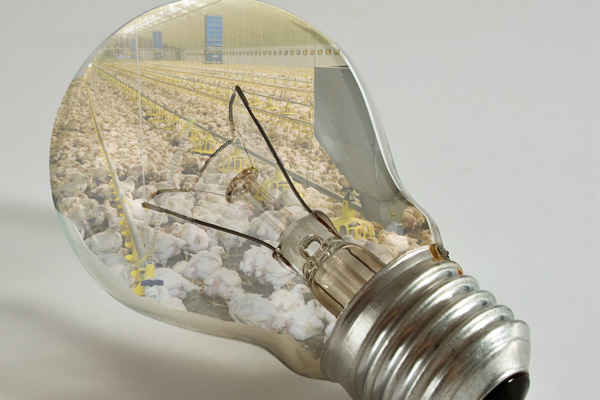Factors to consider in choosing poultry house lighting

Energy conservation is as important as ever. Growers pay energy bills out of their earnings. The more they pay for power, the less net return on the flock.
Efforts to install motors, fans and lights, the components that use the most electricity in poultry houses, are being considered by growers. However, it is not as simple as replacing an old 60 watt incandescent bulb with a newer energy efficient bulb. Factors such as light intensity at floor level, uniform light distribution, life of the bulb and ease of maintaining it should be considered. A US field study evaluated incandescent, compact fluorescent (CFL), cold cathode and LED light bulbs in poultry houses. Light intensity was measured at floor level at the beginning of the study, 6 and 12 months into the study.
Bulbs were cleaned prior to taking the light intensity measurements. The average light intensity was measured in a grid at 1, 10 and 20 ft off of the side wall and every 5 ft down the length of the house for a total of 20 ft. Dimming curves for the bulbs were obtained and bulb losses in each house were recorded at the end of each flock. Data loggers were installed to monitor the house total power and the power utilised by the lighting system. Dimming the light intensity below 5 lux resulted in higher CFL bulb losses. When the house dimmer was marked to show the grower how to limit dimming, bulb losses were reduced from 50% to less than 4%.
The dimming curve of incandescent bulbs was the most linear, followed by cold cathode, LED and CFL. All bulbs exhibited a loss of light intensity that ranged from 25% to 50% depending on the type of bulb. The average light intensity at floor level was 6.8, 10.9, 10.4 and 20.3 for LED, CCFL, LED and CFL respectively. On a second farm light intensity measurements were affected by bulb spacing and height from the floor and reflection off of the ceiling bedding material and walls.
The data suggests that not all bulbs can be used at the current spacing of incandescent bulbs. Poultry producers should evaluate the intensity of the bulb at floor level prior to investing in bulbs for all houses on the farm.
Source: Brian Fairchild, Mike Czarick and John Worley, Department of Poultry Science, University of Georgia, Athens, GA USA. Proceedings of the 2013 International Poultry Scientific Forum, Atlanta, GA USA













